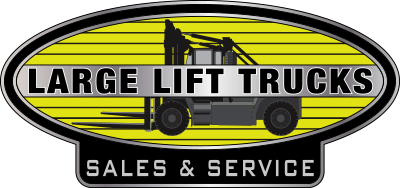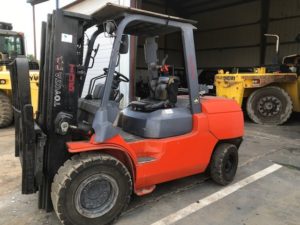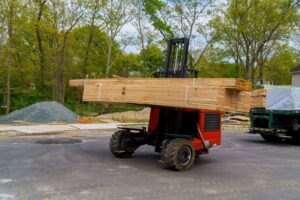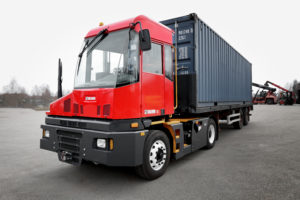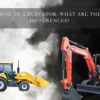What is a Boom Lift?
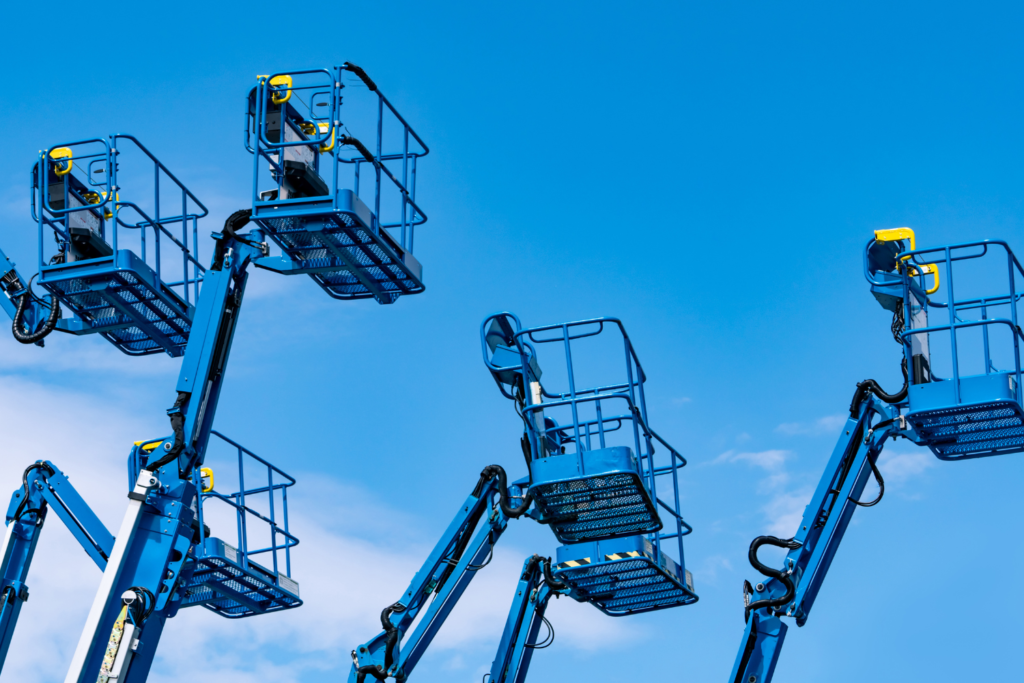
The construction industry uses a lot of heavy-weight equipment to move around materials and people and aid in day-to-day tasks. A boom lift is one such equipment that is commonplace in construction sites, warehouses, farms, and utility lines.
What is a Boom Lift?
The boom lift comes in handy to help construction workers finish their jobs easily by aerially lifting them. It has a movable base that is attached to the hydraulic arm and a bucket which the lift operator angles to reach vertical or horizontal heights.
What Are The Uses of A Boom Lift?
- Construction: Boom lifts are useful in installing building materials, erecting scaffolding, building roofs, etc., making it an integral part of construction sites.
- Window Cleaning: Ever wondered how those tall glass buildings have that sparkling windows? Well, they use boom lifts to safely get their cleaning personnel up there for an efficient cleaning.
- Painting: Using ladders to paint ceilings and tall buildings is not only difficult but also risky. Boom lifts solve this problem seamlessly and securely.
- Tree Trimming: Come monsoon, those tall trees pose a threat to everyone. They could fall, and the overgrown and dead branches could hurt someone during a storm, making them a safety hazzard. That’s why arborists use boom lifts to reach the tops of the trees and trim out the dead branches and leaves.
- Film and Television Production: Shooting high-risk shots from high angles is possible when the camera person sits atop a boom lift to shoot these scenes.
- Agriculture: Certain fruits and nuts grow on tall trees, which are difficult to harvest from ground. Boom lifts help farmers reach these crops and finish harvesting on time.
How Much Weight Can A Boom Lift Hold?
A standard capacity machine can carry over 102 lbs, while a few extra-capacity boom lifts available in the market could hold up to 1000 lbs. The weight-bearing capacity of the boom lift depends on the capacity of the unrestricted or restricted platform. Thus, it is the perfect choice for skilled workers to go about their jobs at great heights while standing atop a boom lift!
Types of Boom Lifts
While the functions of a boom lift are fairly similar, did you know that there are five different types of boom lifts?
- Articulating Boom Lifts
- Telescopic Boom Lifts
- Trailer-Mounted Boom Lifts
- Spider Lifts
- Scissor Lifts
Articulating Boom Lifts
The knuckle boom lifts or the Articulating Boom Lifts have a bending arm with many hinged sections. This makes it easy to maneuver around obstacles, which is important while working on uneven and closed surfaces.
Telescopic Boom Lifts
Often used in wind turbine maintenance and telecommunications industries, these boom lifts have a long telescoping arm that extends in a straight line making it easy to work at greater heights.
Trailer-Mounted Boom Lifts
They are usually towed behind a truck and have a lower lifting capacity than the mounted lifts.
Spider Lifts
Spider lifts are compact and have outriggers, which make them ideal for working in uneven and confined spaces.
Scissor Lifts
This one is debatable as a boom lift because it can only go up and down. However, it has a strong and stable platform that helps lift personnel and materials at construction sites and warehouses.
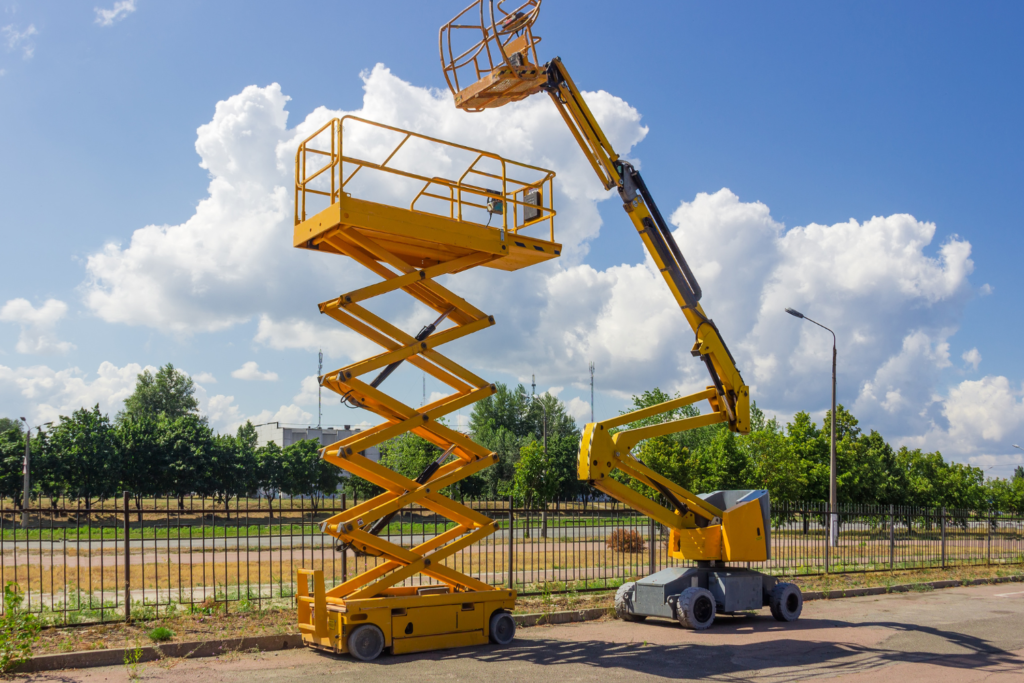
Advantages of Boom Lift
- Accessibility: The safest way to reach high areas, even the uneven ones which cannot be accessed with ladders.
- Economical: Instead of hiring a whole team to manage the ladders and scaffoldings, you can do it with just a boom lift operator and one worker.
- Increased Efficiency: Boom lifts allow workers to access different areas at heights with ease helping them finish tasks faster.
- Transportation: Most boom lifts have wheels and can be driven around. The others can be towed to different job sites on a need basis.
- Easy to Operate: Trained professionals can operate a boom lift with a simple joystick or other user-friendly controls (based on the model).
- Wide Range in terms of Size and Capacity: Based on your industry, job site, and your workers, you can pick a boom lift as there is a wide variety of options to choose from.
- Better Reach: Unlike a ladder or a scaffolding which has limited reach, a boom lift arm can stretch, making it easier to reach great heights.
Disadvantages of Boom Lift
The boom lifts market is booming now than ever before due to the construction industry. Market research suggests that the industry could be witnessing a 5.5 percent growth in its Compound Annual Growth Rate (CAGR) in the years from 2021 through 2030. The reasons for the growth in the Boom lift industry are evident from the advantages we spoke about earlier. However, boom lifts have quite a few disadvantages too.
- Expensive: Boom lifts are expensive and the price could range anything from $25,000 to $75,000 for a standard model.
- High Maintenance: To ensure the safety of your workers, regular maintenance of the boom lift is important.
- Niche Certifications: Not everyone can operate a boom lift. You need a skilled and trained workforce. At a time when there is a skilled labor shortage, owning a boom lift could be a disadvantage.
- Fuel Costs: Gas or diesel-powered boom lifts incur fuel costs for operation.
Frequently Asked Questions About Boom Lifts
How High Can A Boom Lift Reach?
Boom lifts come in a variety of heights. While some can reach as high as 185 feet (telescopic lifts) there are smaller ones too. These have a reaching capacity of just 20 to 50 feet(scissor lifts).
What Happens If A Boom Lift Tips Over?
Modern boom lifts have overload warnings. They are designed to automatically shut off to prevent tipping.
Is It Better To Rent Or Buy A Boom Lift?
This depends on your needs. While renting is cost-effective for occasional use, buying makes sense for frequent use.
Can Boom Lifts Be Used Indoors?
Yes, some boom lifts are specifically designed for indoor use.
